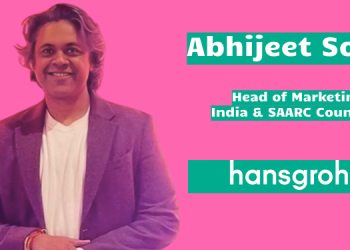When brands consistently seek new paths to engage their audiences, Digital altruism – campaigns that combine marketing with support for social causes – serves as an unquestionably powerful tool to reach consumers who care about making a positive impact. And yet activism-washing and green-washing gets called out early, and these campaigns must be thought through and invested in when promoting products on the sidelines of driving real change, with the goal to create a bond that resonates with socially conscious customers.
In a country like India, where issues like education, healthcare, environmental conservation and women’s empowerment are critically important, getting on board with digital altruism By backing causes that people care about, they are building unquestionable goodwill and loyalty among customers who want to see companies act responsibly. I’m going to show you exactly how digital altruism works and highlight some of the most impactful campaigns in India that are really making a difference.
What is Digital Altruism?
Digital altruism refers to a brand’s use of online platforms and digital marketing to promote and support social causes, rather than simply focusing on profit. These philanthropic campaigns often have a dual purpose: they aim to spread awareness about critical social issues and generate a positive association with the brand. Instead of relying solely on traditional advertising methods, brands leverage social media, online content, and influencer collaborations to champion causes that resonate with their target audience.
For consumers, digital altruism provides an easy way to support causes they care about. When they buy products or engage with brands that actively give back, they feel that they, too, are contributing to a larger good. Brands that succeed in implementing digital altruism often enjoy increased customer loyalty, positive brand perception, and, in some cases, even increased sales.
Why Philanthropic Marketing Campaigns Matter
Consumers today are more discerning and socially aware than ever before. They want to know that the companies they support are making a positive impact on the world. In fact, studies show that nearly 60% of Indian consumers are more likely to support brands that take a stand on social issues. Digital altruism allows companies to showcase their values, which helps them connect with socially conscious audiences on a personal level.
For brands, digital altruism isn’t just about promoting a product; it’s about building a legacy. By supporting causes that align with their customers’ beliefs, they create a lasting impression. More importantly, digital altruism helps brands differentiate themselves in a crowded market. When two products are similar in quality and price, consumers often choose the brand that demonstrates a commitment to social responsibility.
Examples of Digital Altruism in India
Several brands in India have effectively used philanthropic marketing to support important social causes, fostering trust and loyalty among consumers. Here are a few examples:
1. Tata Tea’s “Jaago Re” Campaign
Tata Tea is one of the earliest adopters of social issue-based marketing in India. Their “Jaago Re” (Wake Up) campaign initially encouraged Indians to “wake up” to social issues. Over the years, Tata Tea has used this platform to address a range of causes, including voting awareness, gender equality, and mental health. The campaign’s strong message and social relevance made it hugely popular, and it has since become synonymous with Tata Tea’s brand identity. By combining a relevant social message with powerful storytelling, Tata Tea has built a reputation as a socially responsible brand that genuinely cares about societal progress.
2. Reliance Jio’s Support for Digital Education
In response to the COVID-19 pandemic and the resulting shift to online learning, Reliance Jio launched initiatives to support digital education across India. Jio’s affordable data plans and partnerships with educational platforms made it possible for millions of students to access online classes, helping bridge the digital divide. By making education accessible to a wider audience, especially in rural areas, Jio positioned itself as a brand committed to uplifting society. This campaign aligned with Reliance’s broader goals of digital inclusion and economic empowerment, garnering widespread appreciation from consumers.
3. Hindustan Unilever’s “Project Shakti”
Hindustan Unilever’s “Project Shakti” is a unique initiative aimed at empowering rural women. Through this project, HUL provides rural women with training and resources to become entrepreneurs, helping them sell Unilever products in their local communities. This campaign not only provides women with a source of income but also fosters self-reliance and economic independence. By highlighting this initiative, HUL positions itself as a company that actively supports gender equality and rural development, gaining the trust and admiration of Indian consumers.
4. Mahindra’s “Rise for Good”
Mahindra Group’s “Rise for Good” campaign encourages positive change through a variety of social initiatives, ranging from education and healthcare to environmental sustainability. Mahindra’s efforts include planting millions of trees across India, promoting clean energy, and supporting education for underprivileged children. By showcasing these initiatives through digital platforms, Mahindra builds a strong, positive association with its brand, positioning itself as a company that genuinely cares about a better future for all Indians.
5. Paytm’s COVID-19 Relief Fund Campaign
During the peak of the COVID-19 pandemic, Paytm launched a relief fund campaign to support healthcare workers and provide essential supplies to affected communities. The company used its digital platform to raise awareness and encourage donations from users, promising to match contributions. This campaign was widely appreciated, as it provided an easy and convenient way for people to contribute to pandemic relief efforts. Paytm’s initiative demonstrated a sense of social responsibility and community support, strengthening its reputation as a compassionate and empathetic brand.
How to Create a Successful Digital Altruism Campaign
A successful philanthropic marketing campaign requires a genuine commitment to the cause, rather than just a desire for positive publicity. Here are a few steps brands can take to create impactful digital altruism campaigns:
- Choose a Cause That Aligns with Your Brand: The cause should be relevant to the brand’s identity and values. For example, a tea brand like Tata Tea supporting social awakening makes sense because tea is often associated with thoughtful conversation.
- Engage the Audience Authentically: Consumers can sense when a brand is inauthentic. Brands should communicate their campaigns in a way that feels genuine and empathetic.
- Involve Influencers and Ambassadors: Partnering with influencers who are passionate about the cause can help amplify the message. Influencers bring credibility and reach, helping the brand connect with a larger audience.
- Show Real Impact: People want to see how their contributions are making a difference. Brands should provide regular updates and share success stories to show the real impact of their campaigns.
- Make It Easy to Participate: Digital altruism campaigns should be easy for consumers to join. Whether it’s through a purchase-based donation model or a simple hashtag, removing barriers to participation helps maximize engagement.
Conclusion: A Call-to-Action for Brands
Digital altruism is more than just a trend; it’s a movement toward a future where businesses and consumers can work together to create a positive impact on society. For brands, engaging in philanthropic marketing campaigns is a win-win: it allows them to make a difference in society while also building meaningful connections with their audience.
As consumers, we have the power to support brands that share our values and contribute to causes that matter. By choosing these brands, we’re sending a powerful message that doing good is not just desirable—it’s essential. So, the next time you make a purchase, think about the brands that give back and consider supporting those that are dedicated to making a positive change. And for brands, let’s continue to innovate, inspire, and contribute. Digital altruism has the power to create lasting change, one campaign at a time.
(Views are personal)

















